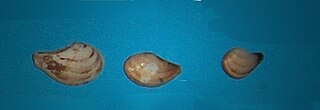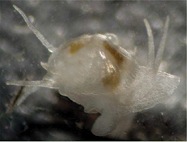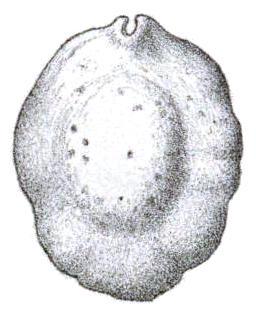| Limopsidae | |
|---|---|
 | |
| Limopsis multistriata (Forsskål, 1775) | |
| Scientific classification | |
| Kingdom: | Animalia |
| Phylum: | Mollusca |
| Class: | Bivalvia |
| Order: | Arcida |
| Superfamily: | Limopsoidea |
| Family: | Limopsidae Dall, 1895 |
| Genera | |
7, See text | |
Limopsidae is a family of bivalves, related to the ark clams and bittersweets. This family contains about thirty species in seven genera.
Family is one of the eight major hierarchical taxonomic ranks in Linnaean taxonomy; it is classified between order and genus. A family may be divided into subfamilies, which are intermediate ranks between the ranks of family and genus. The official family names are Latin in origin; however, popular names are often used: for example, walnut trees and hickory trees belong to the family Juglandaceae, but that family is commonly referred to as being the "walnut family".

Ark clam is the common name for a family of small to large-sized saltwater clams or marine bivalve molluscs in the family Arcidae. Ark clams vary both in shape and size. They number about 200 species worldwide.

Glycymerididae, previously known as Glycymeridae, common names dog cockles or bittersweets, is a worldwide family of salt water clams, marine bivalve mollusks in the order Arcida. They are related to the ark clams. This family contains 45 species in four genera.

















